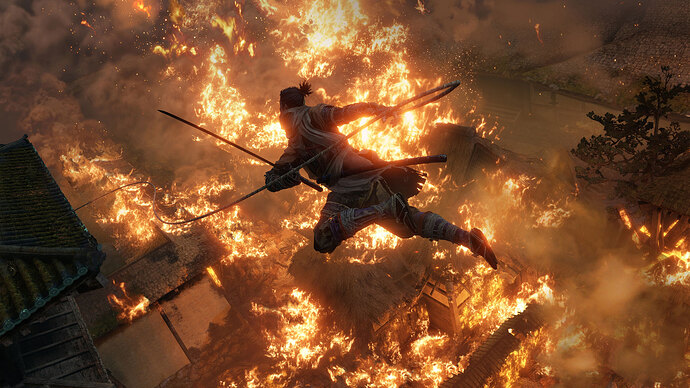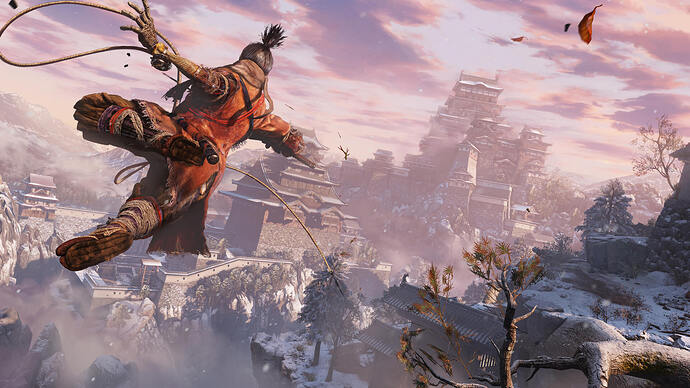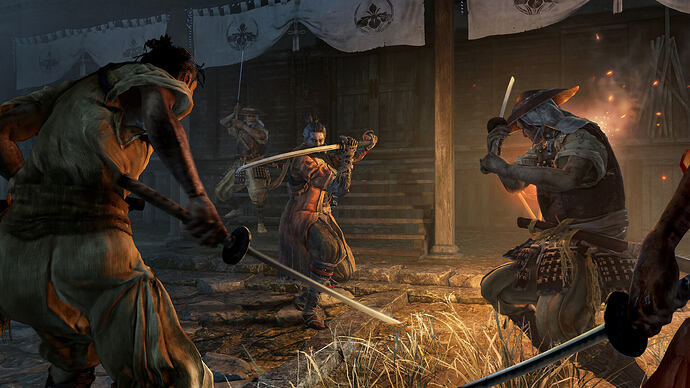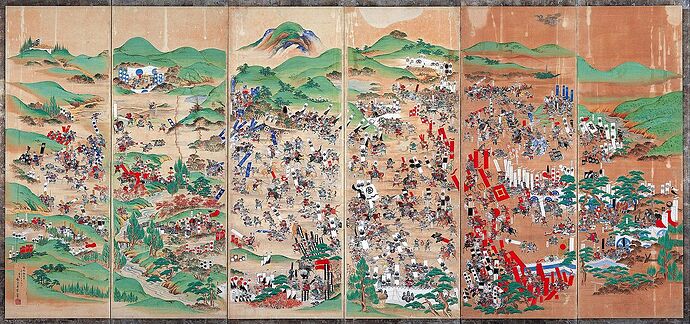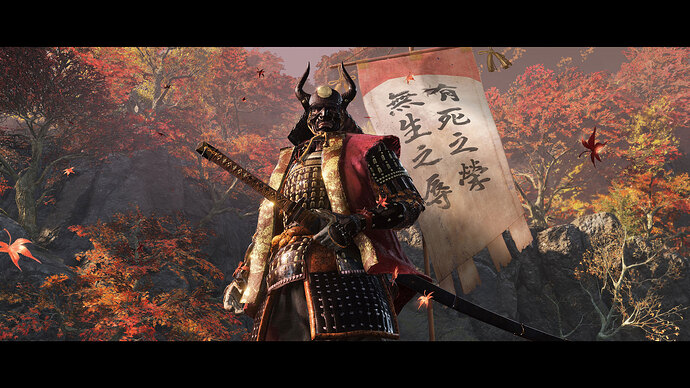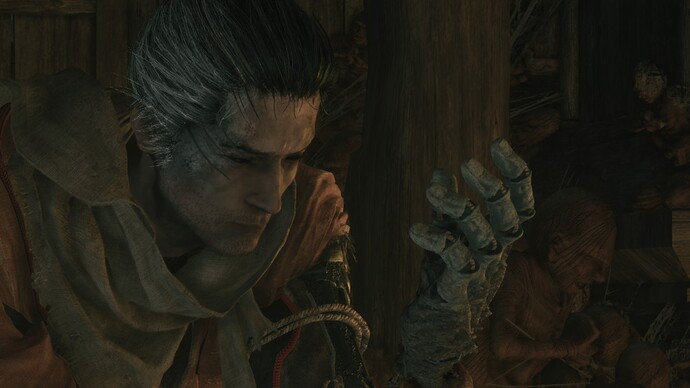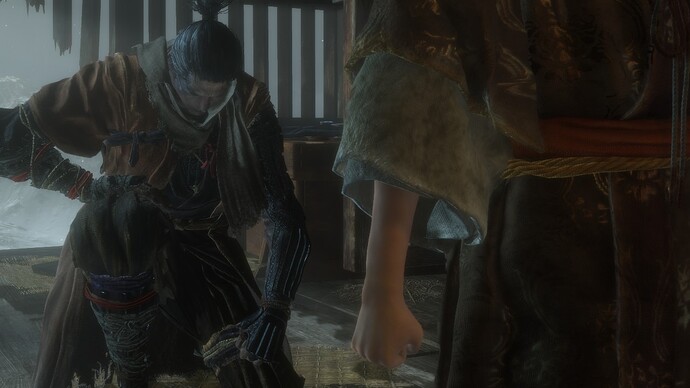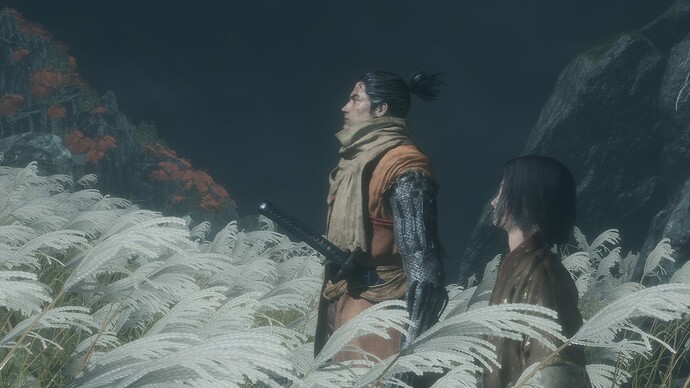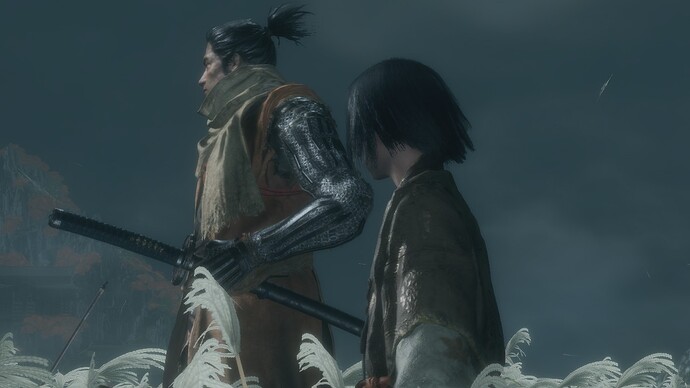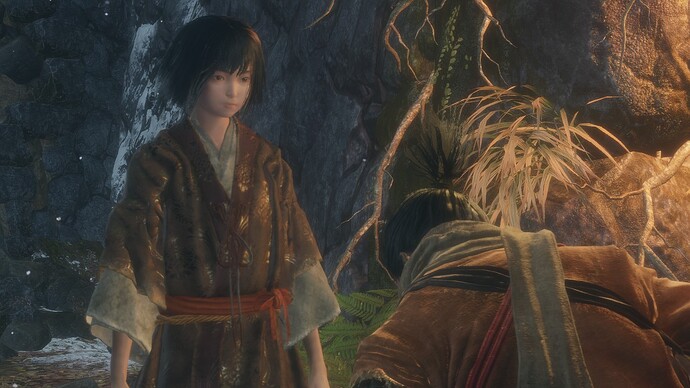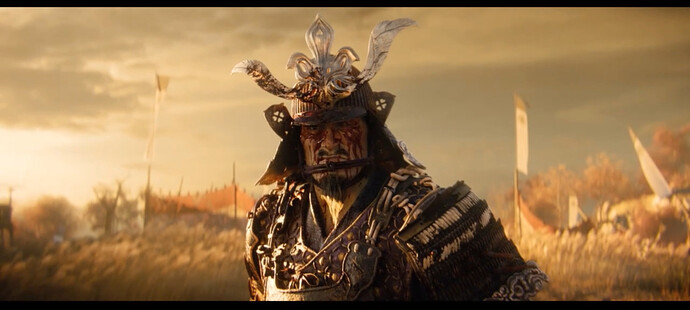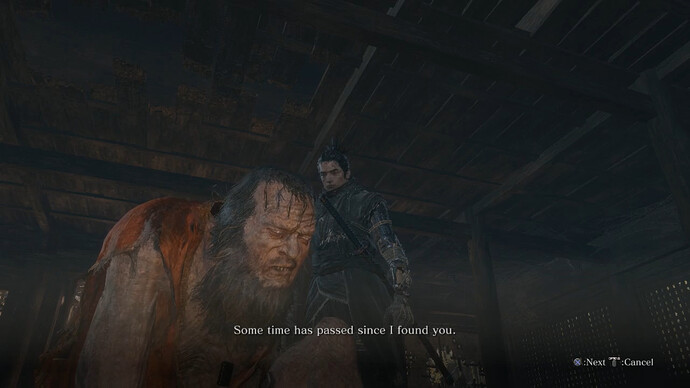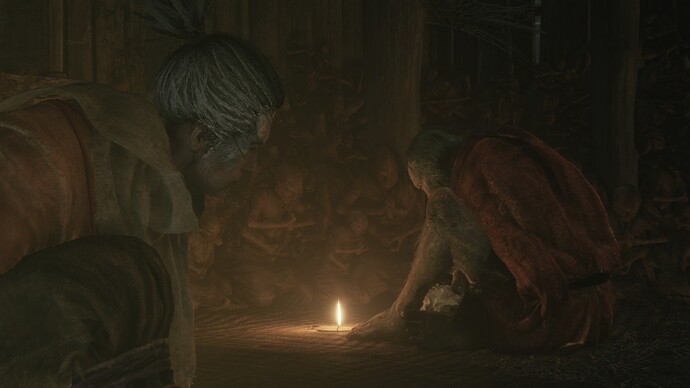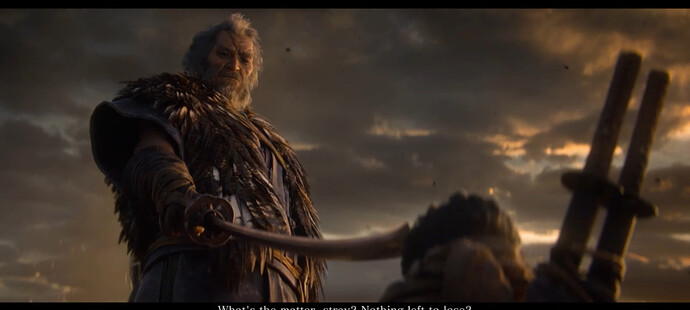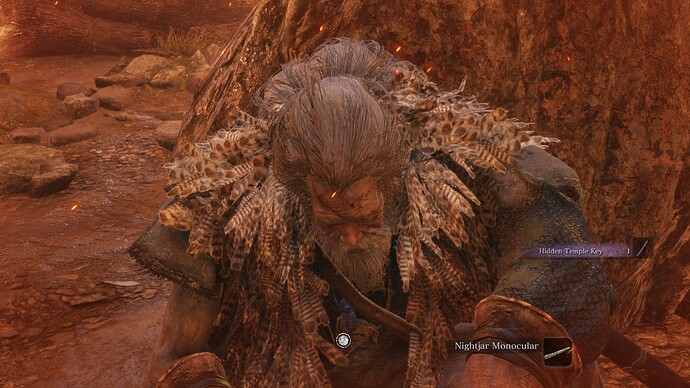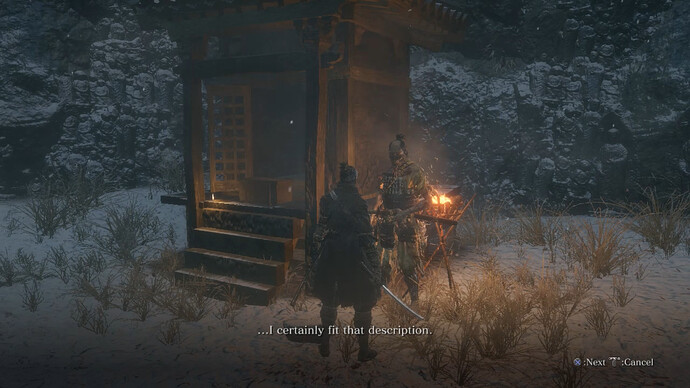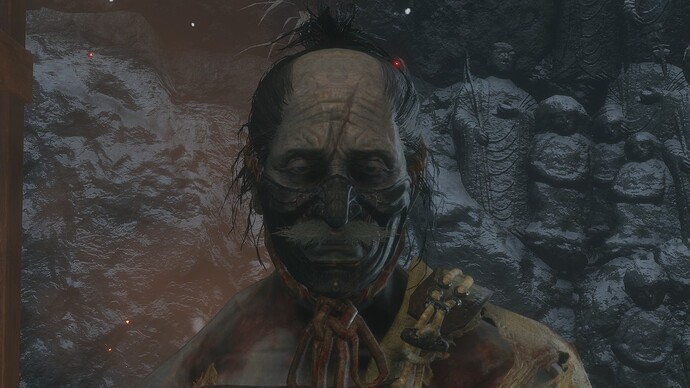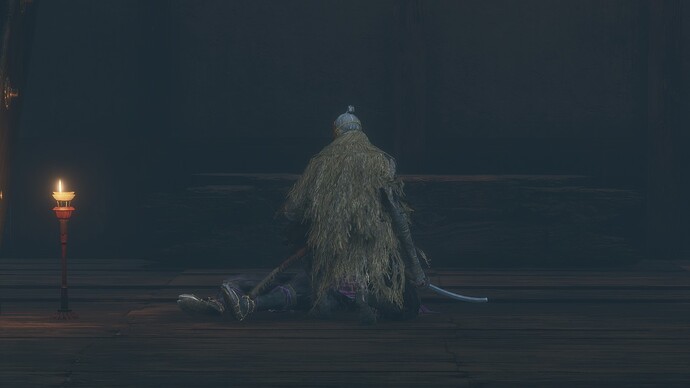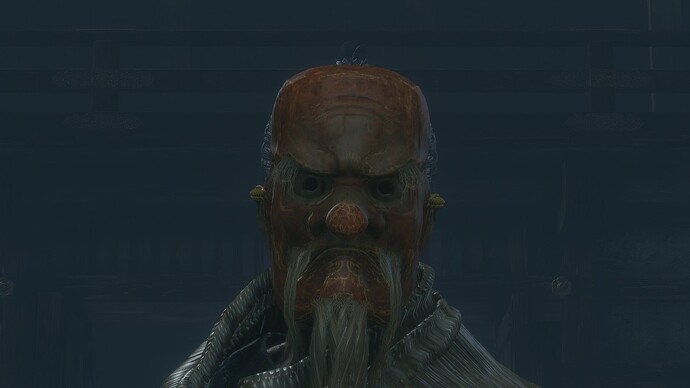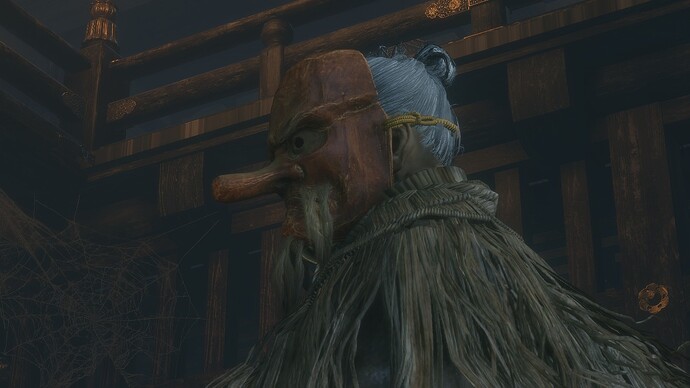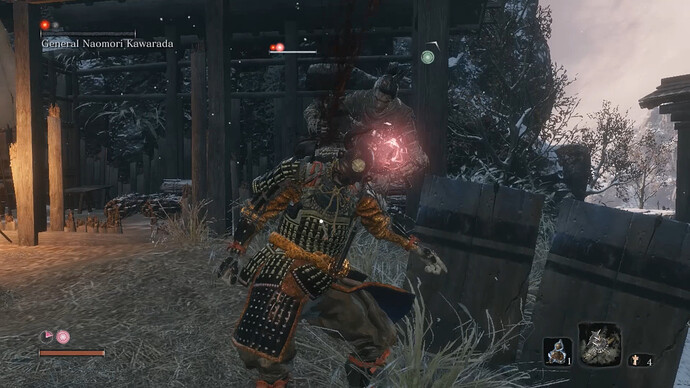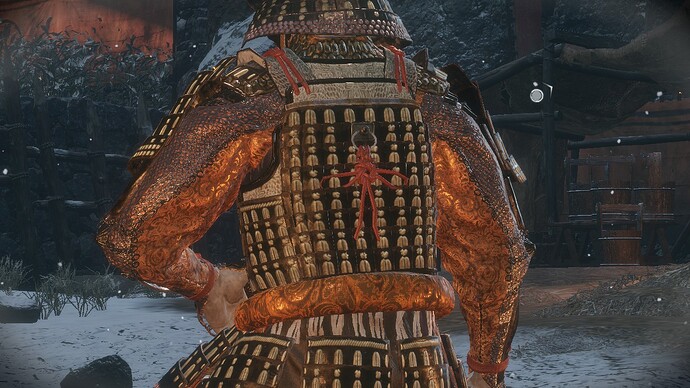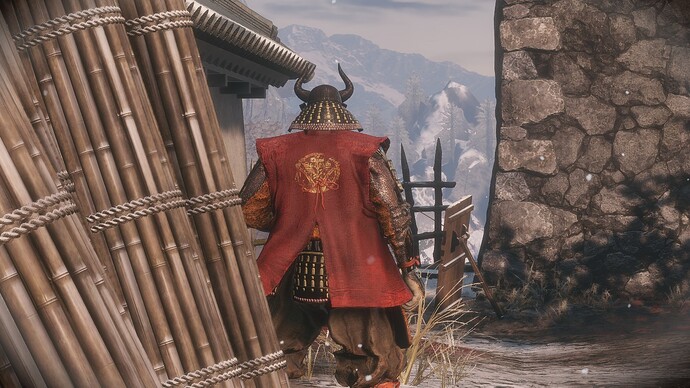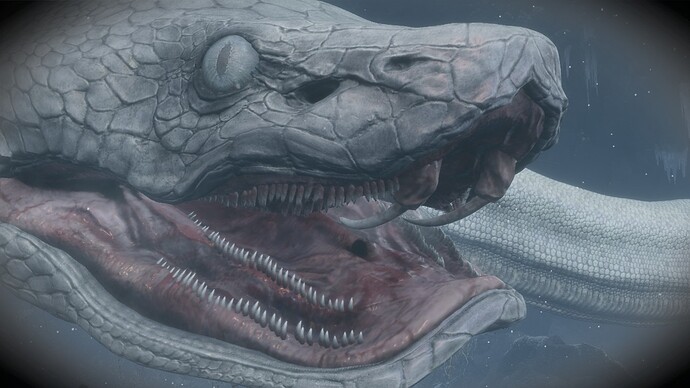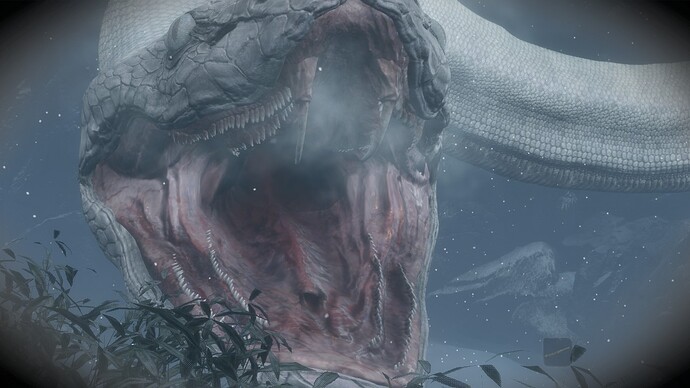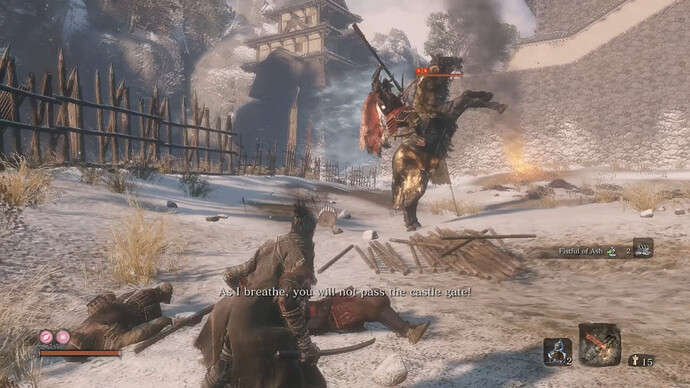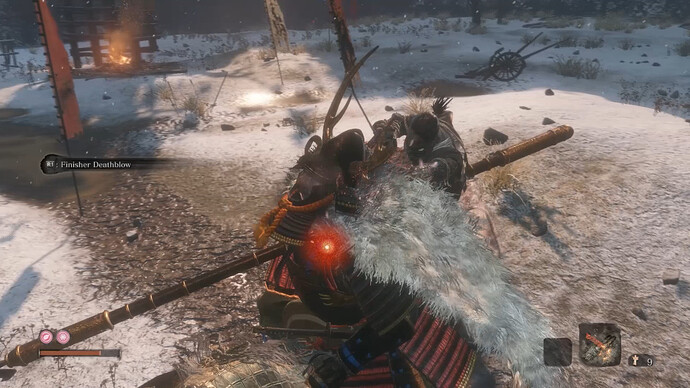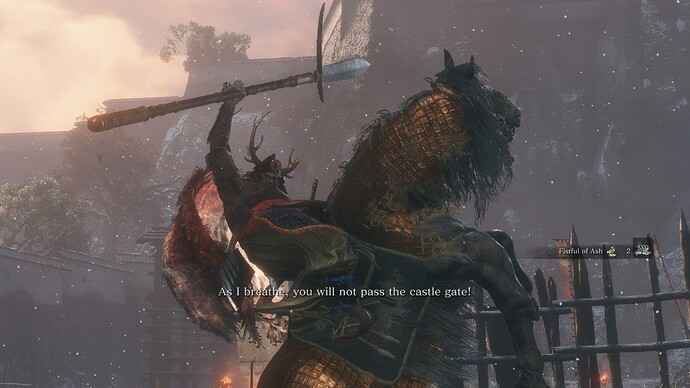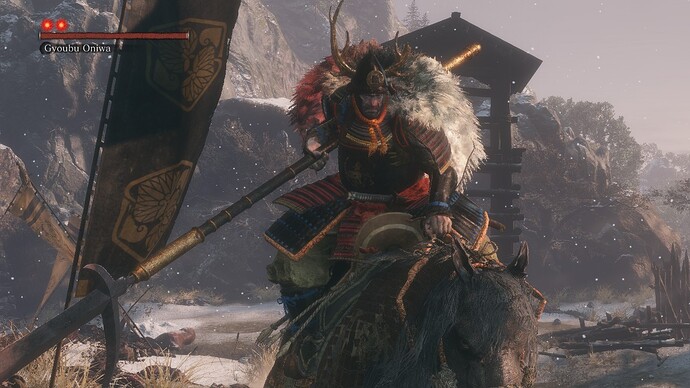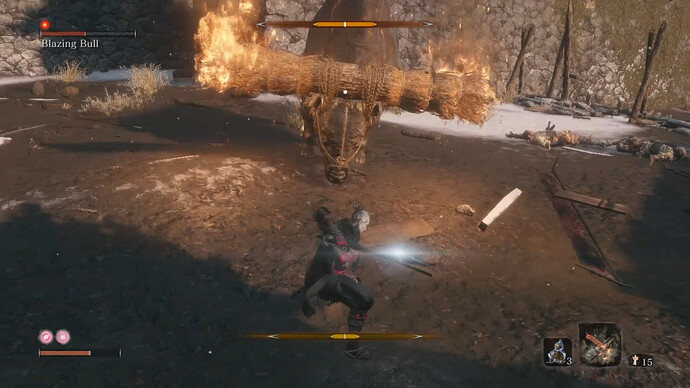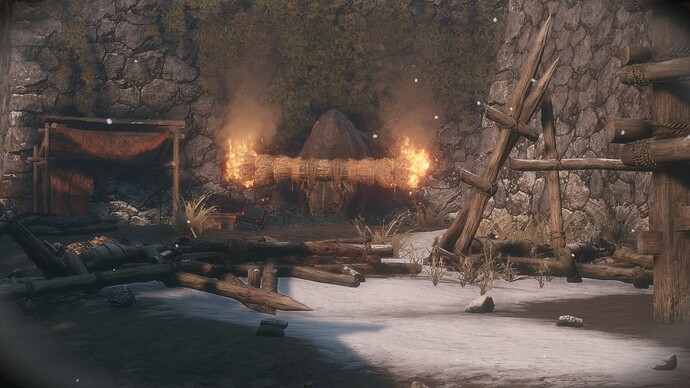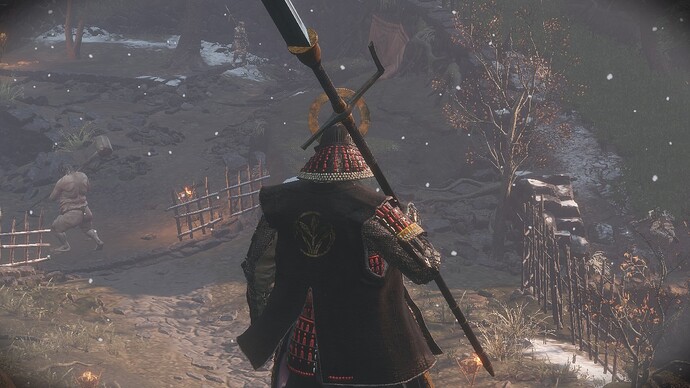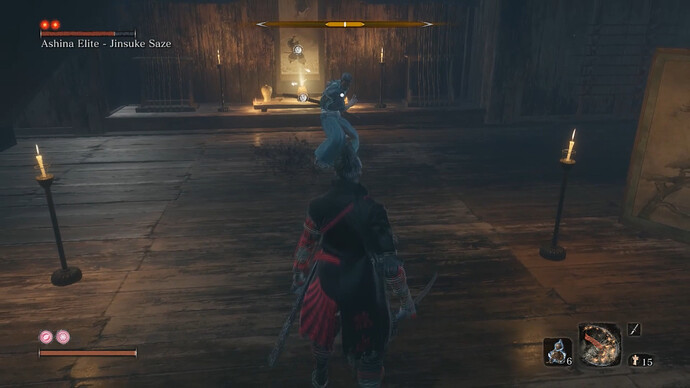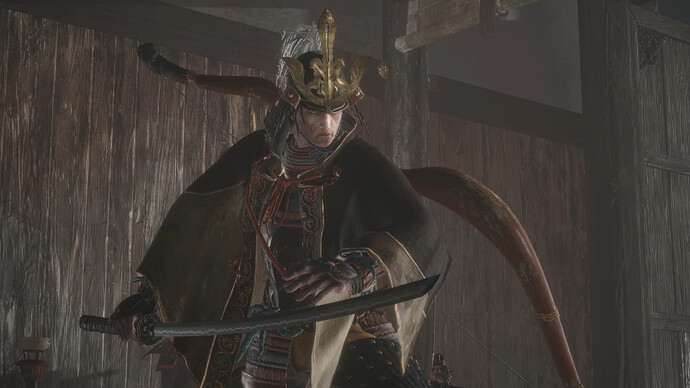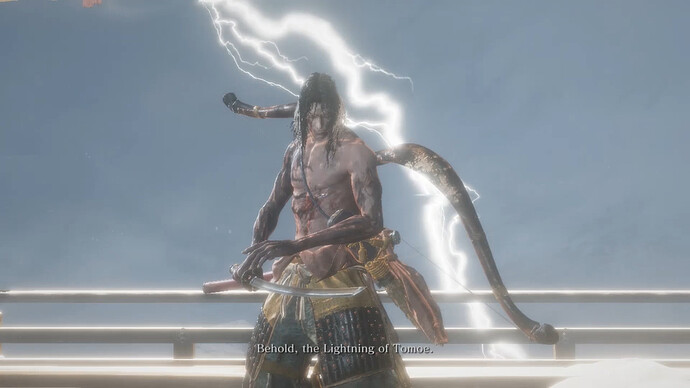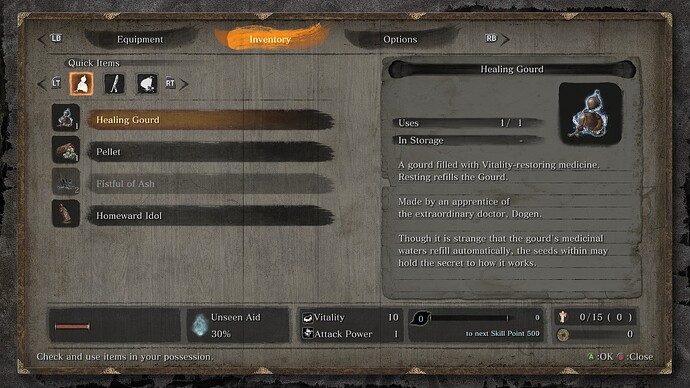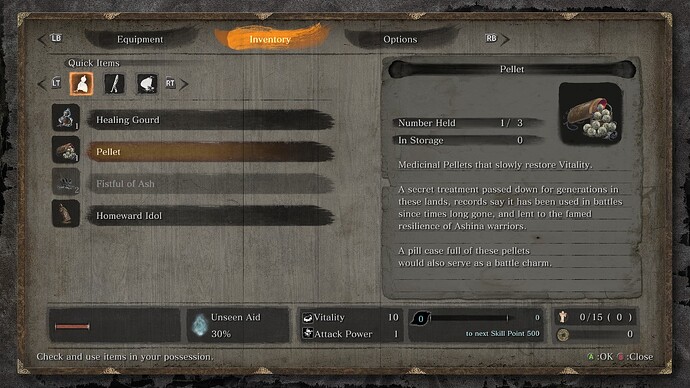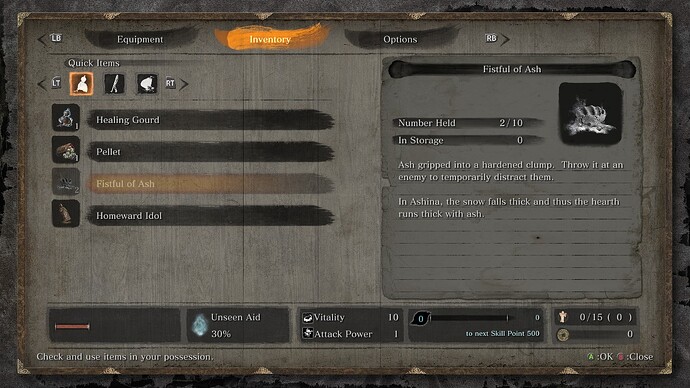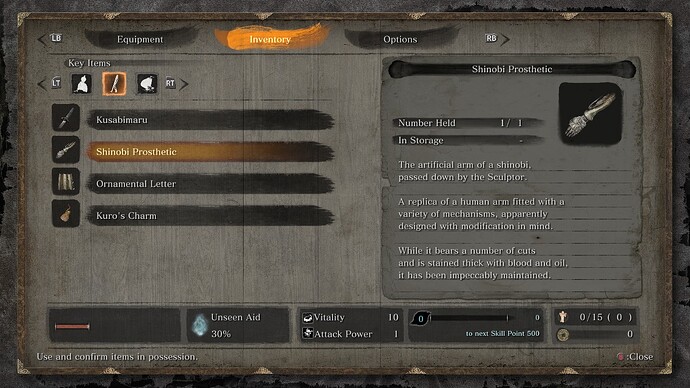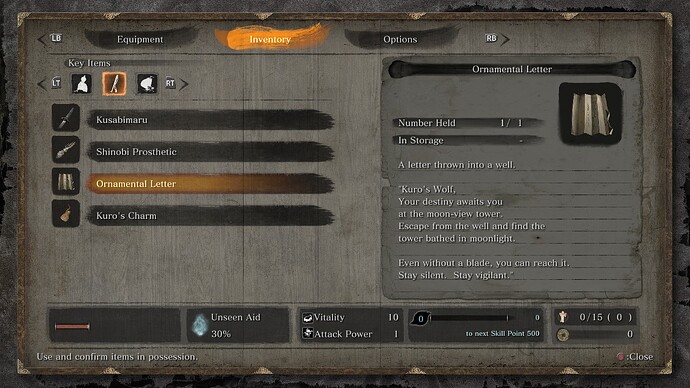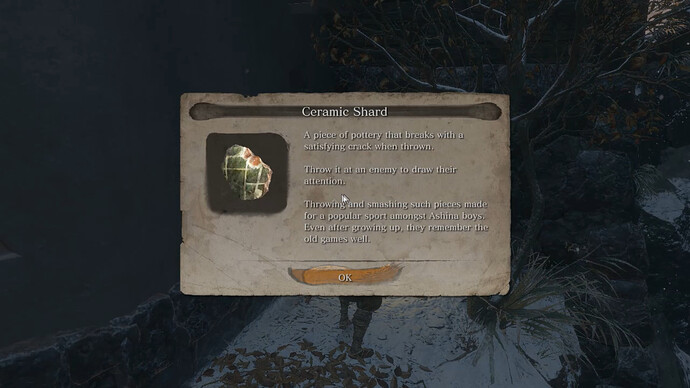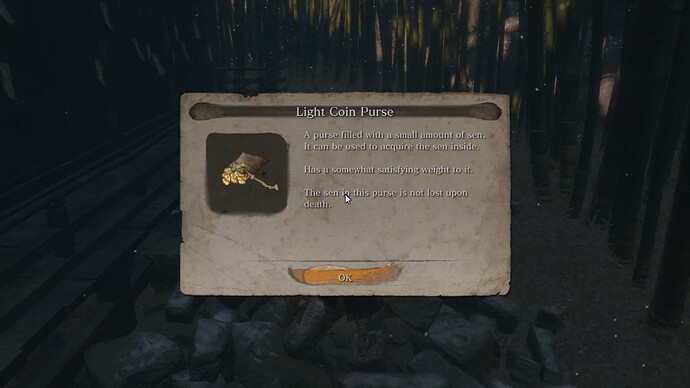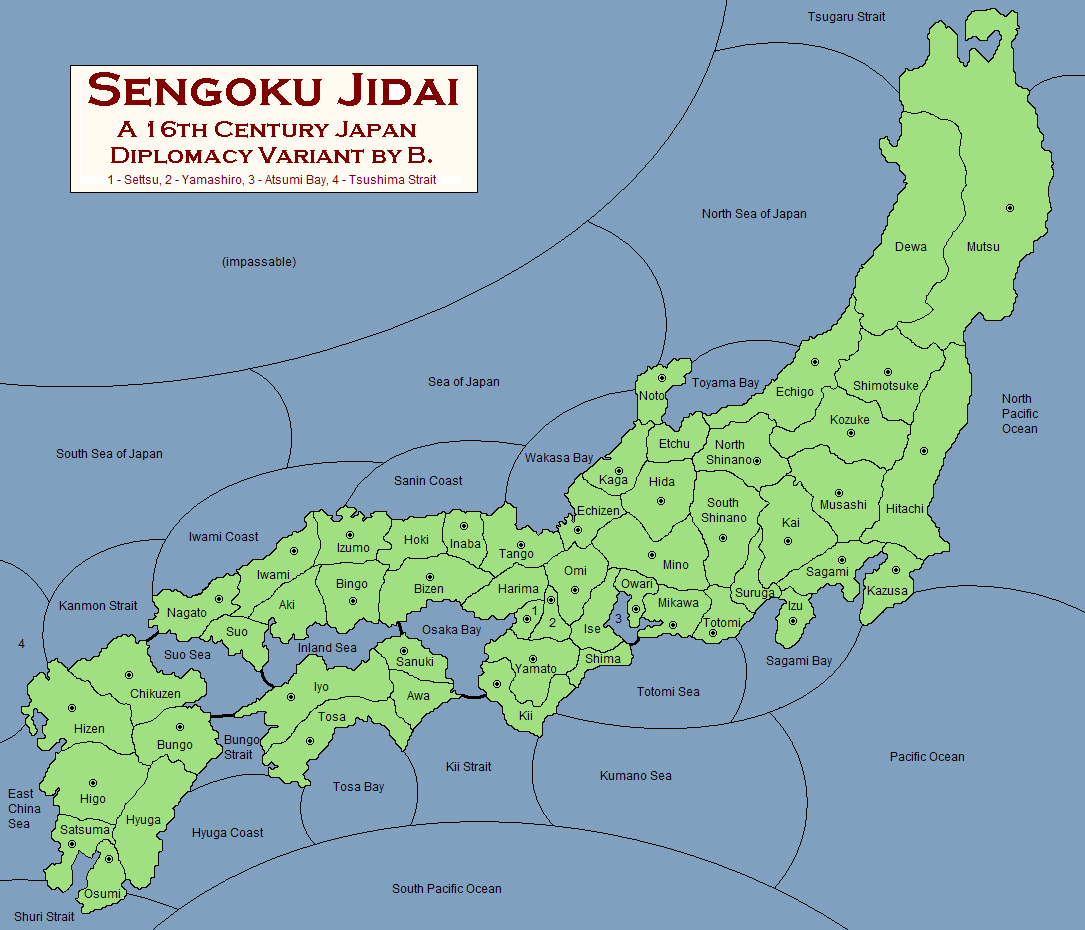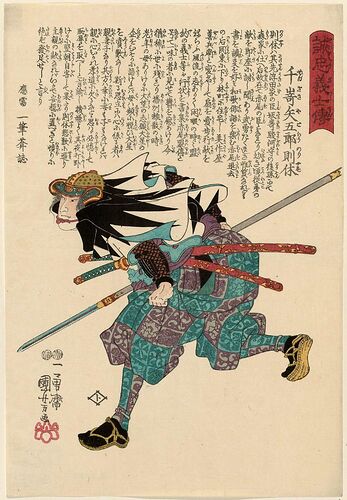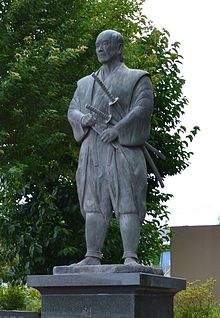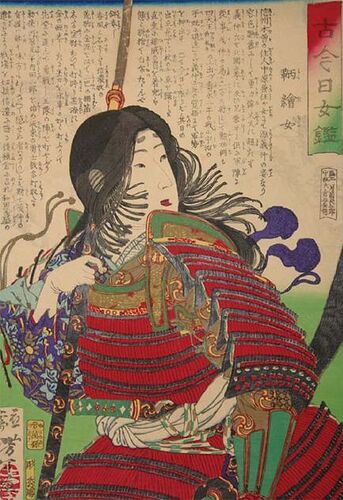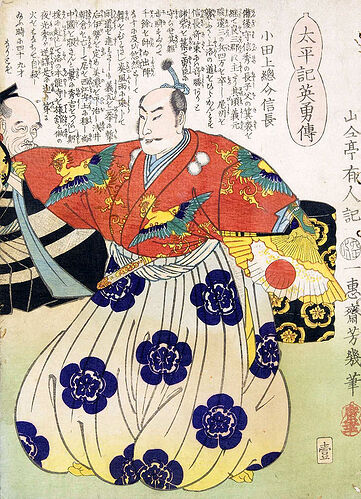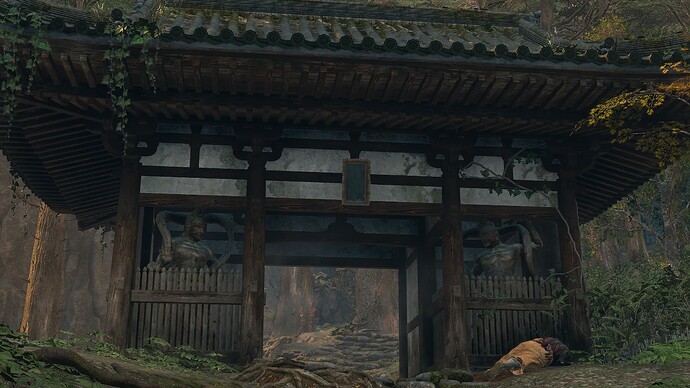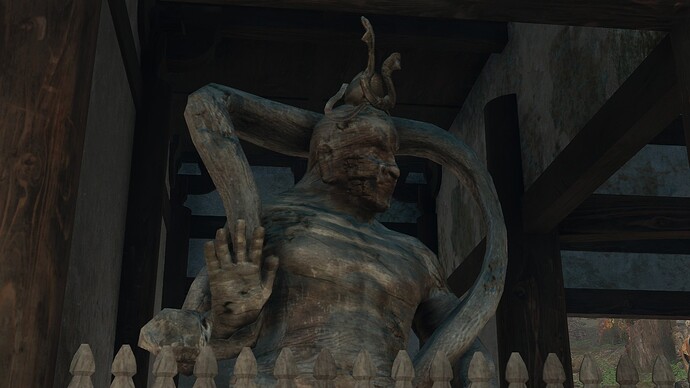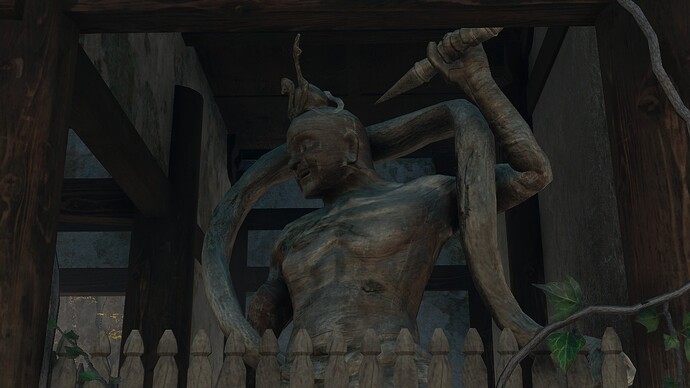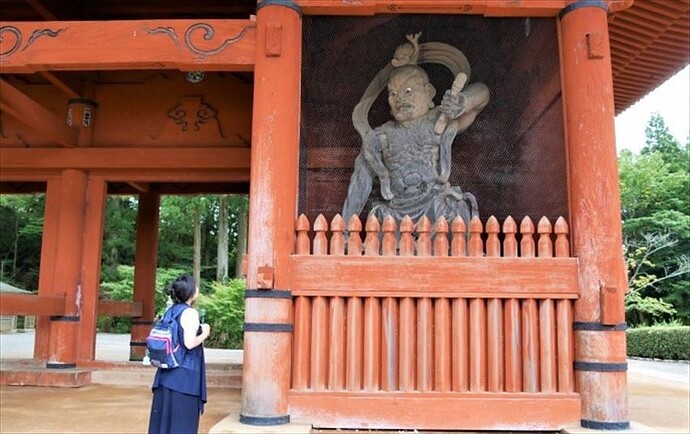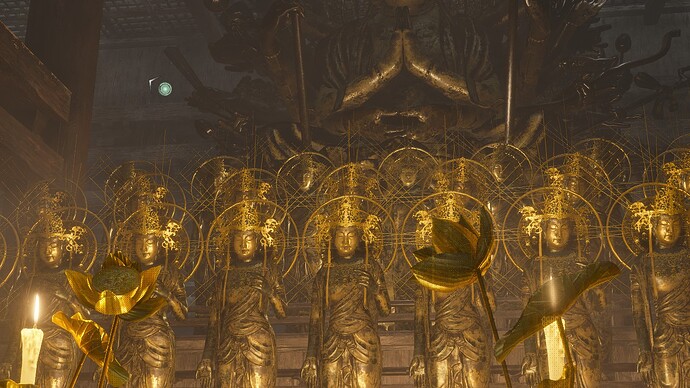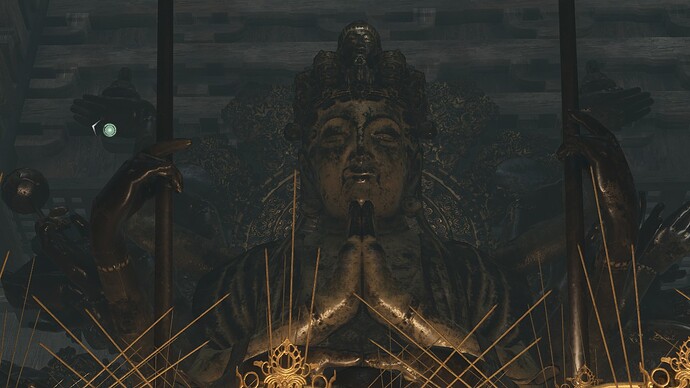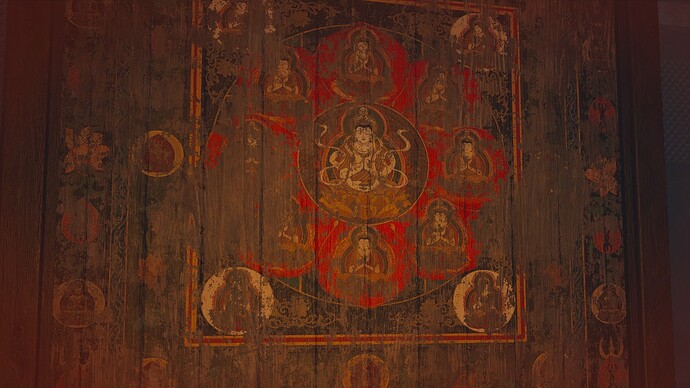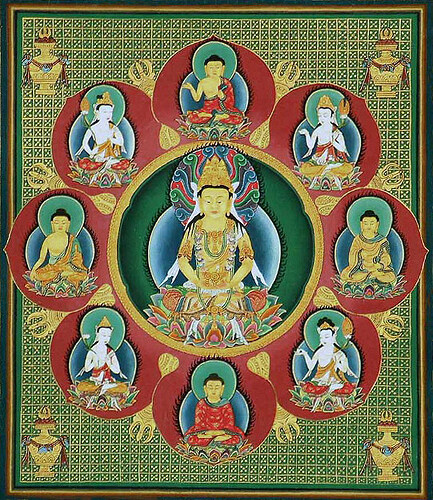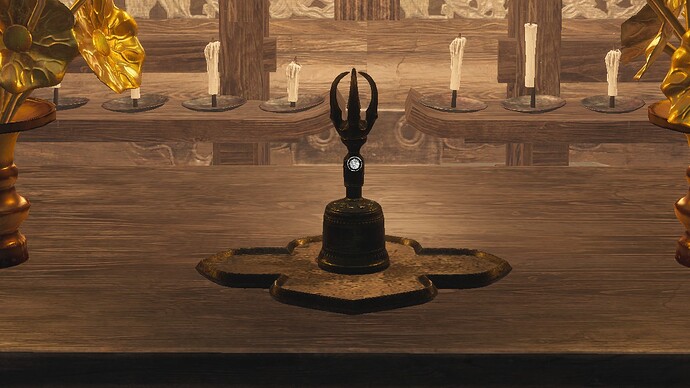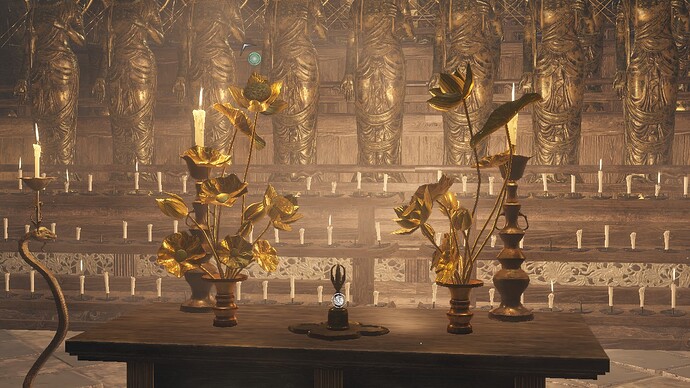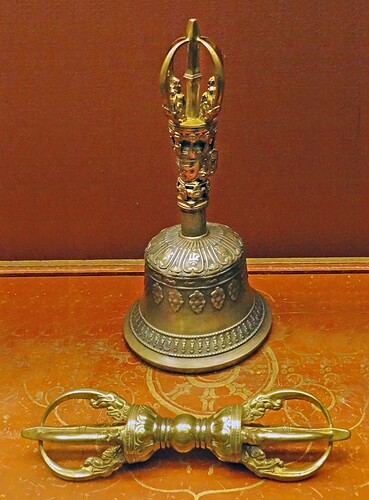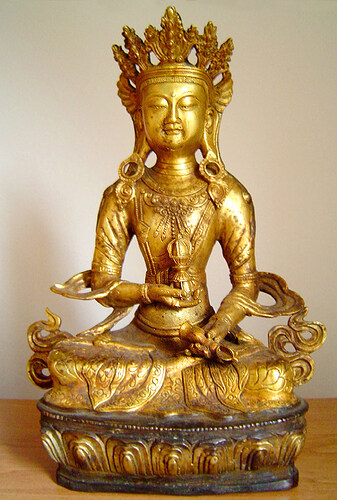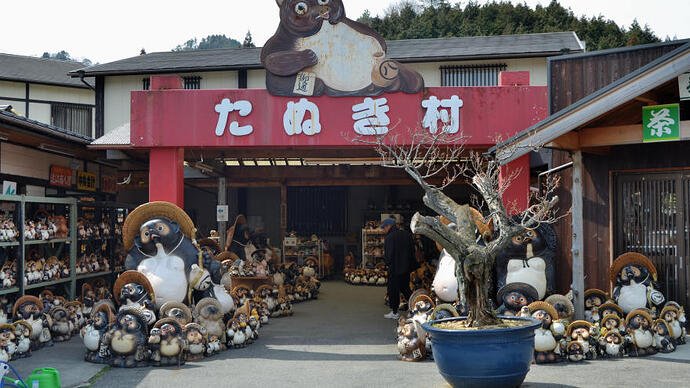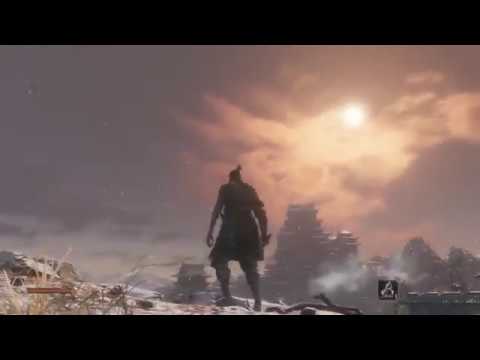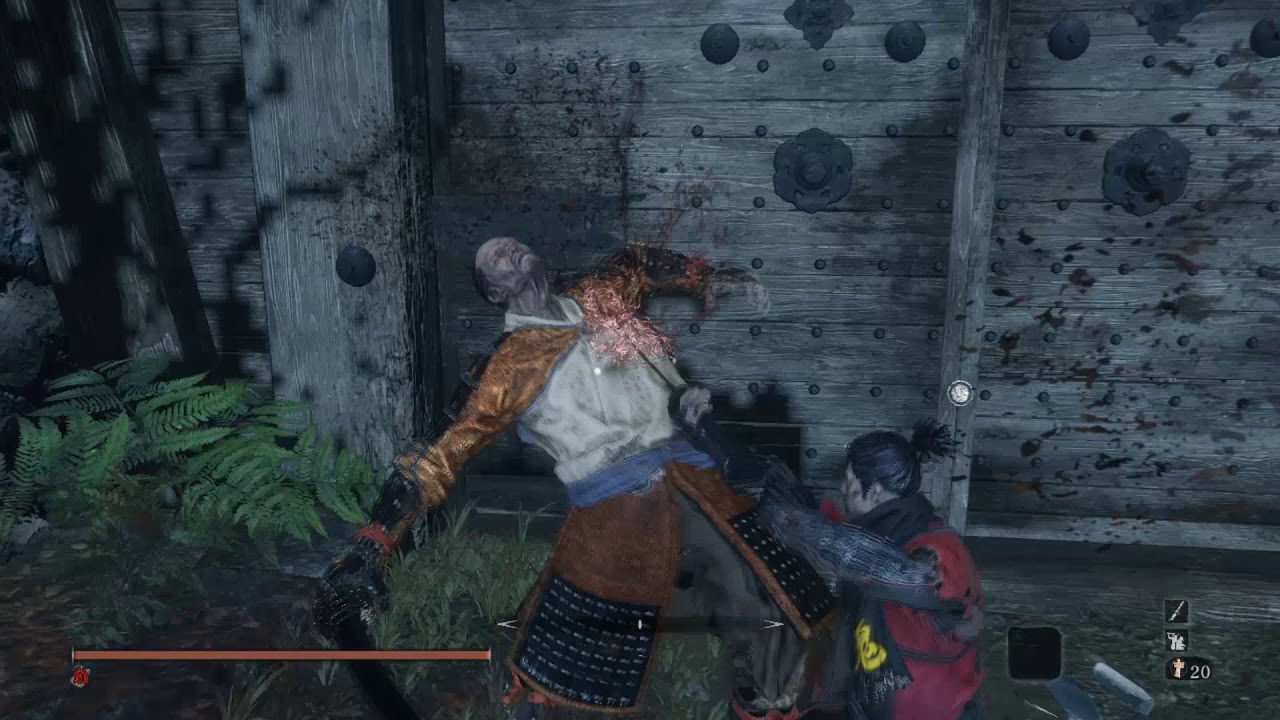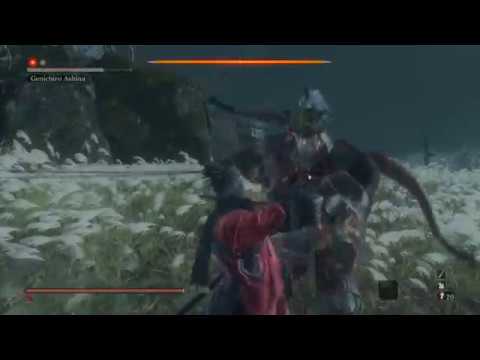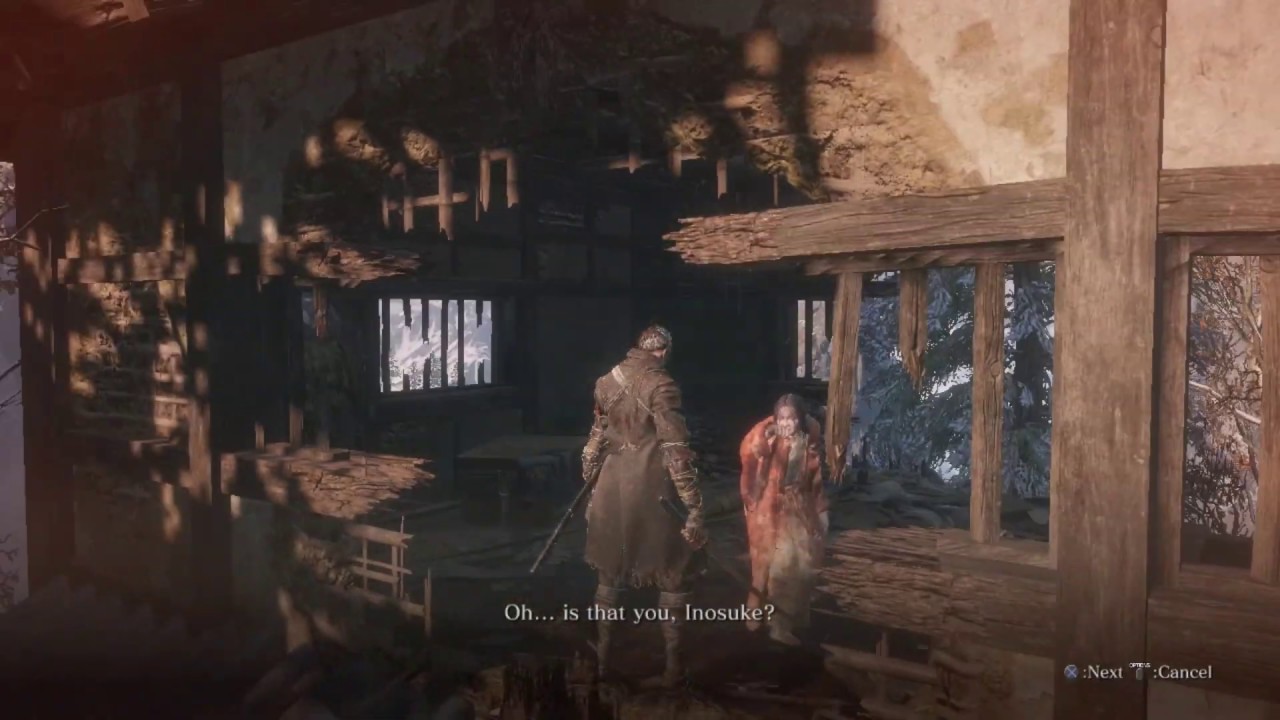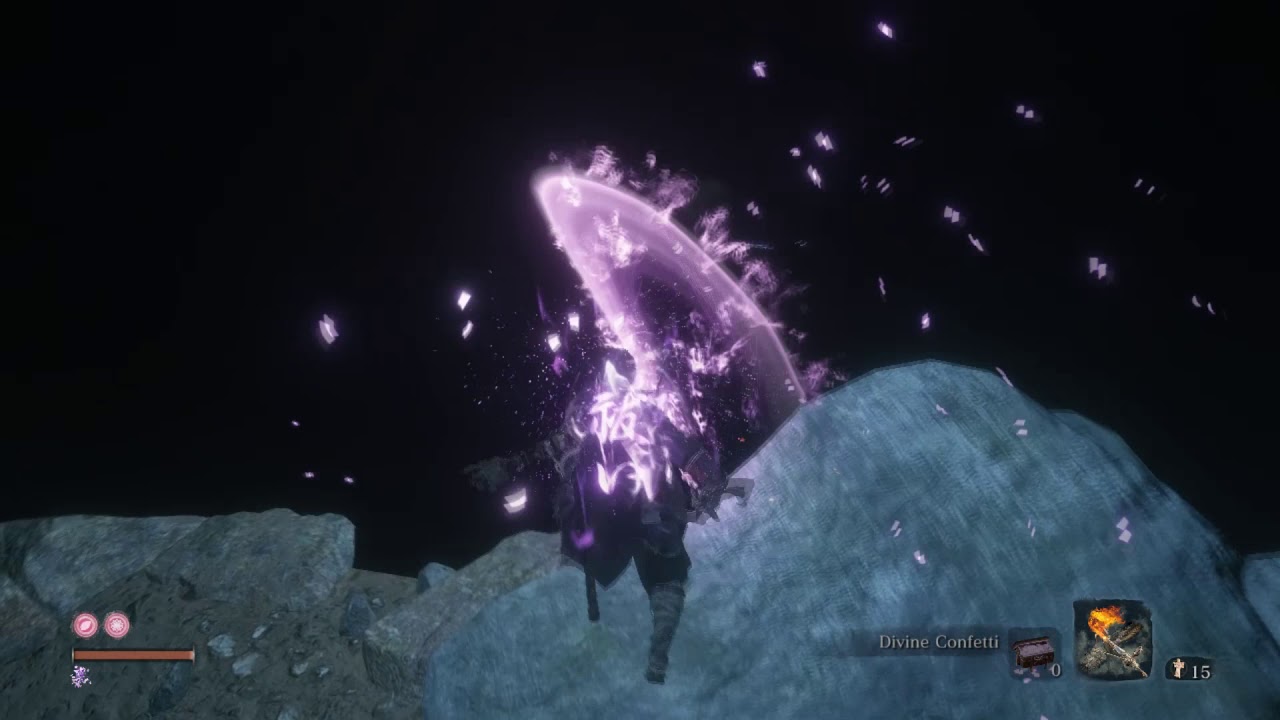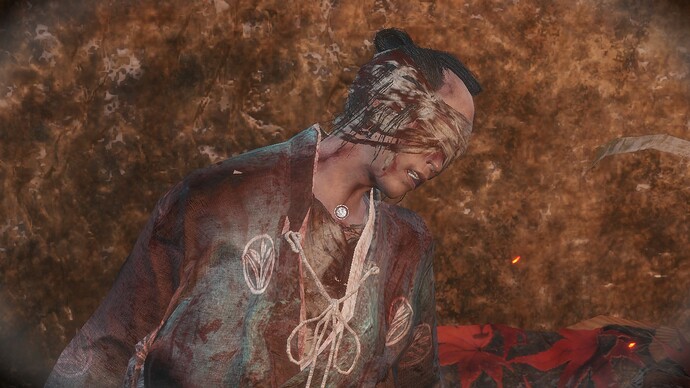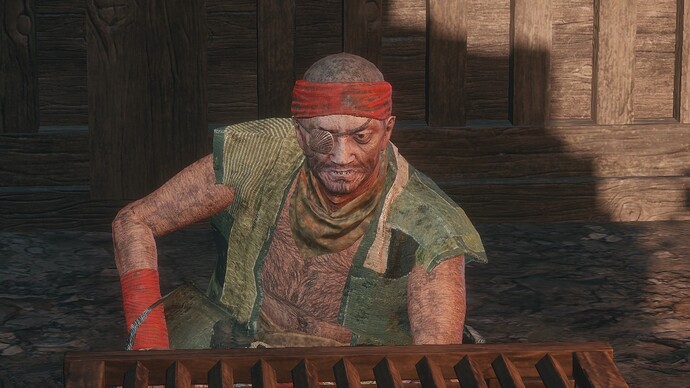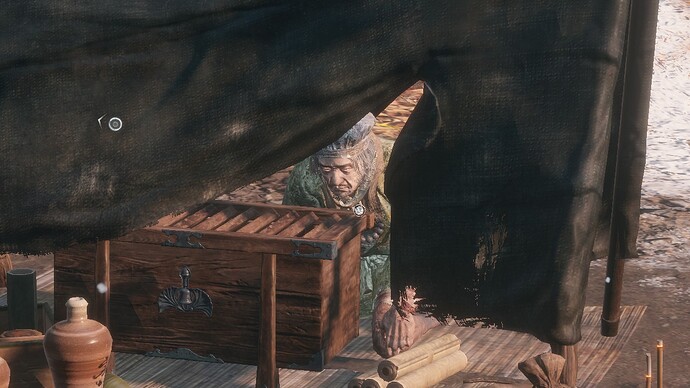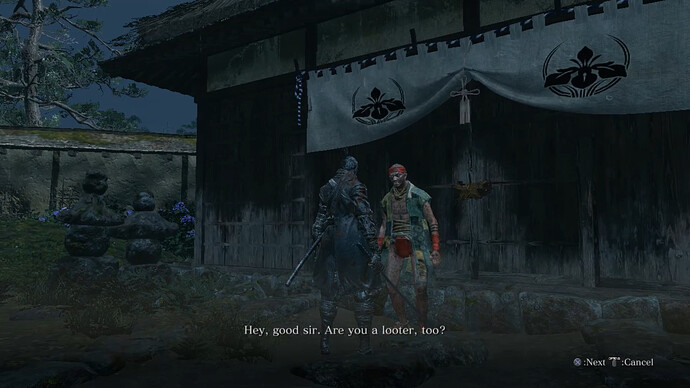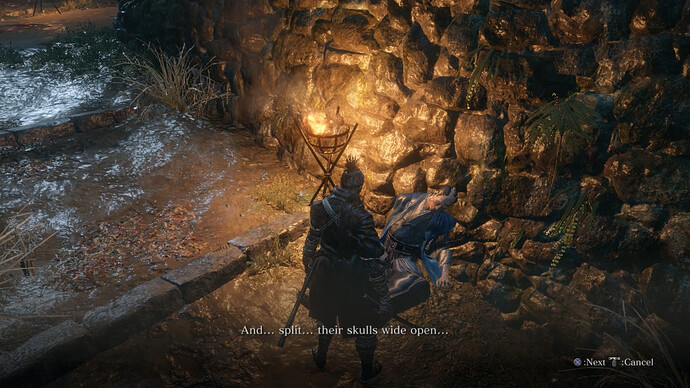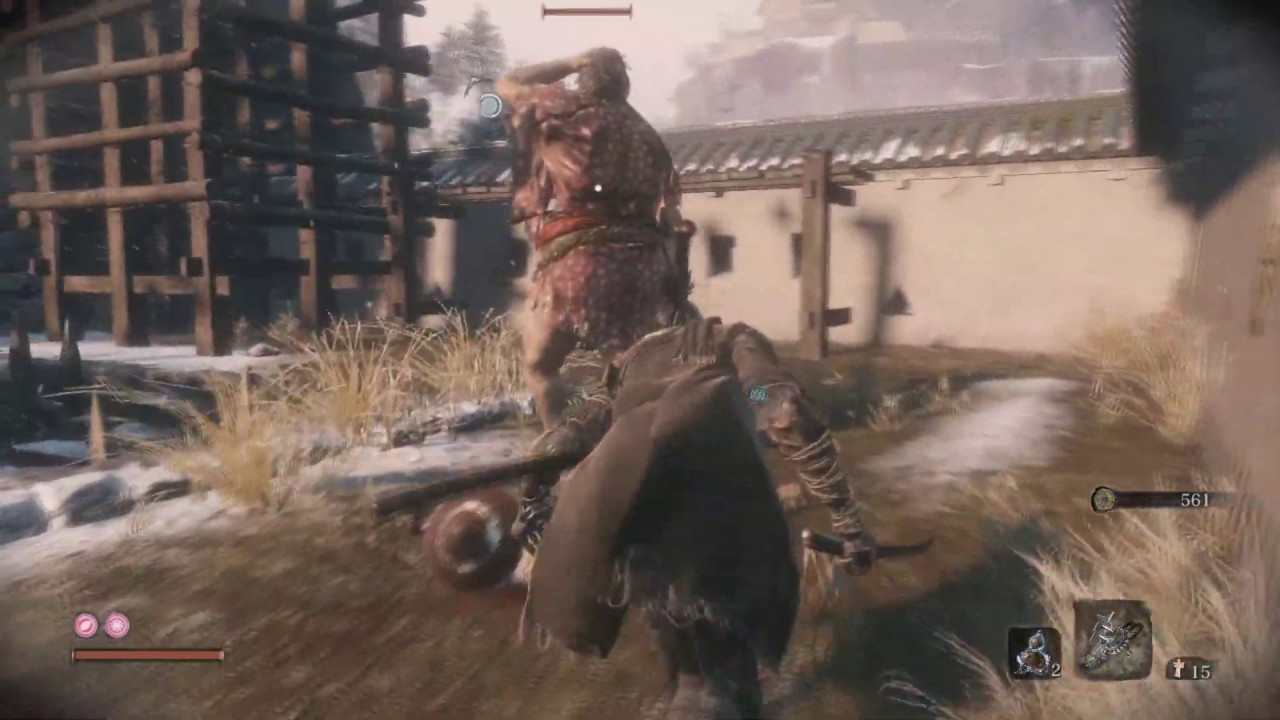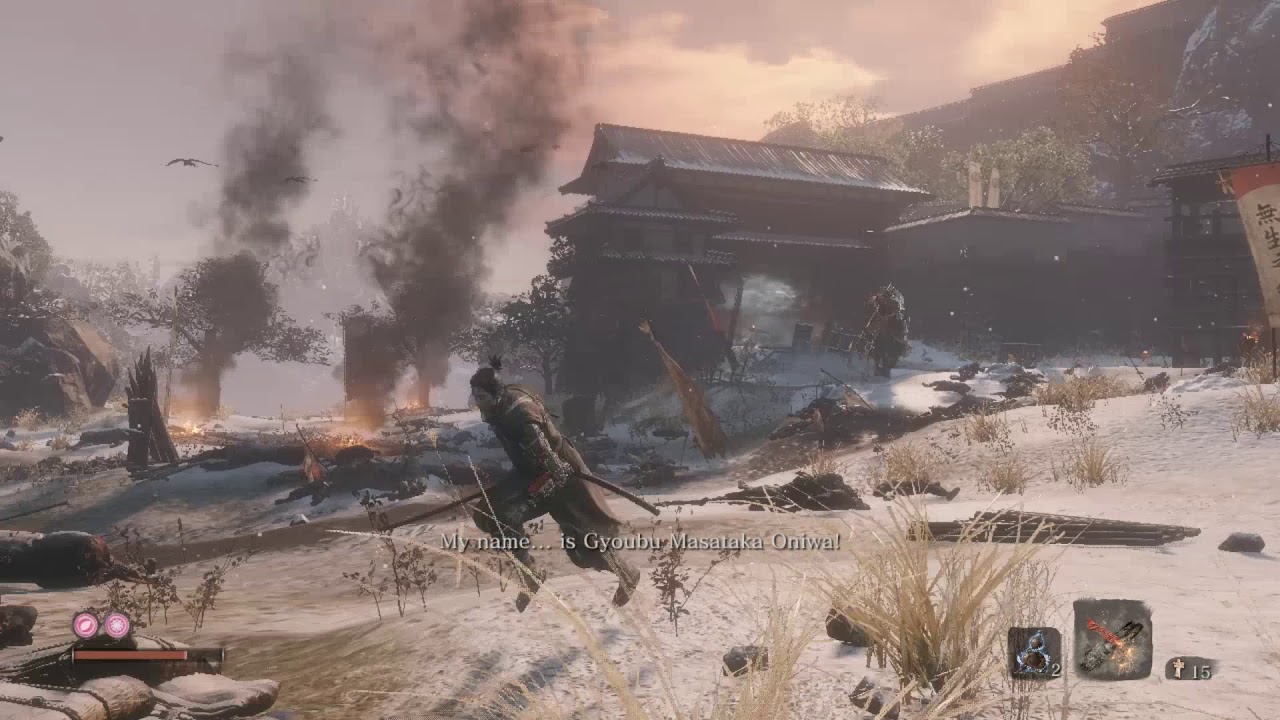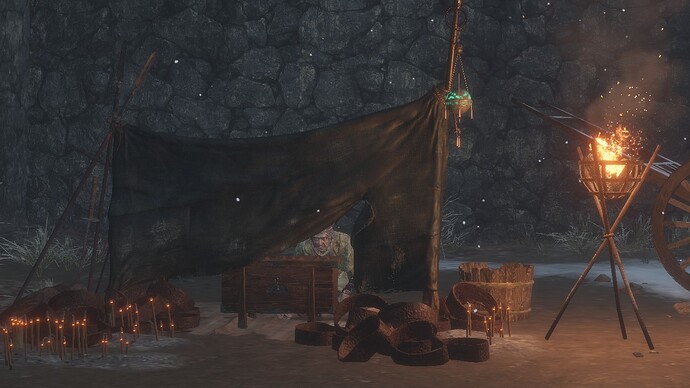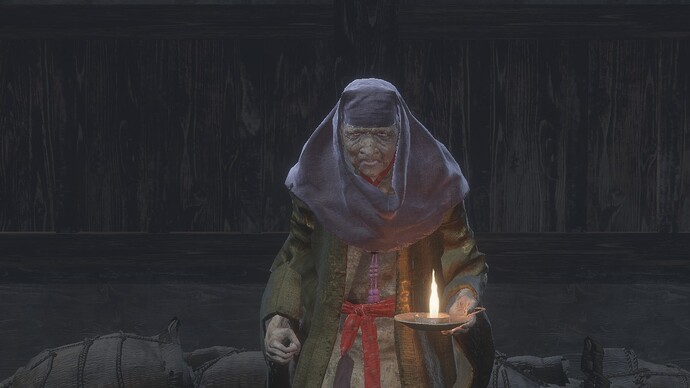Hello there I’m Tolvo, back to trying out LP’ing again after getting an external hard drive and working on fixing all of my technical problems I’ve had in the past. I will be LP’ing in this thread Sekiro: Shadows Die Twice, a game I’ve already beaten a few times and have already done challenge runs(Including no hit) of the bosses and game. Those videos are on youtube so beware, if you want to avoid spoilers do not look at my videos tab on youtube.
Content Warnings!
Sekiro has a good amount of content people may wish to avoid, I will do my best to list things that I believe fall under this category below with explanations for those that require it.
- Blood and Gore - Sekiro features a lot of combat. It is not as gory as a lot of Souls games are or Bloodborne, it is more inspired by Japanese cinema so it goes for the blood burst a lot, but there are moments with gore and beheading which are especially frowned upon in Japan.
- Flashing Lights - Sekiro has fires, and explosions. It has energy attacks, it also has a system for parrying which involves a flash of light to indicate when you’ve parried(Deflected) an attack.
- Overloading Stimuli - Sekiro has moments and areas with a ridiculous amount of particles, moving characters, fire, and other lights. Frequently there is falling snow or flora and a lot of areas are on fire. This is on top of all the various different attacks and sounds.
- Animal Cruelty - Sekiro features enemies that are animals, every enemy in the game that I know of has deathblows(Executions) which may be upsetting to people.
- Violence Against Children - Sekiro often does censor this, when a child is to be harmed, which is usually done in a ritual manner not an attack the game hides the child with the camera and environment or completely fades to black(Wolf is even told to close his eyes). The opening cinematic does feature a sword being dragged across a child’s cheek and them cutting their hand intentionally on the blade in contrast to the rest of the game. However while it does fade to black you will hear audio.
- Gunshots - Sekiro takes place after Westerners landed in Tanegashima in Japan during the Sengoku Era, as such guns are around and there will be loud gunshots.
- Alcohol - Sekiro has alcohol in it. Usually it is just given to an NPC to hear dialogue though it is in a few other moments.
- Body Horror - Sekiro does feature some body horror, not to the degree of other Fromsoft games but it is still there.
- Centipedes - Centipedes are core to the story of Sekiro and are in key moments in the game.
- Darkness - There are very dark areas in Sekiro. Wolf naturally can see in darkness but it still has a very dark filter. I play on max brightness.
- Ghosts - Sekiro has an Apparition enemy type, some of them are kind of creepy and have spooky music.
- Suicide - Suicide is not actually very common in Sekiro despite when it is set, very rarely is it mentioned and mostly it is done so in relation to rituals.
- Disease - Disease is core to the story of Sekiro and people can get violently ill and die in the game.
- Loud - Sekiro can get very loud, I’m playing on the lowest difficulty available for the LP and will try to adjust things in editing if it is needed, this is especially difficult with voice over so I will do my best.
- Heights - Sekiro has some incredible heights, and you can fall for dozens of seconds at points. As well using grappling hooks and climbing are core parts of the games.
Sekiro: Shadows Die Twice is the latest Fromsoftware game. It is a spiritual successor to the Souls series and Bloodborne but is quite different in many ways. There will be some carry over features like dying and returning to a resting area, the camera and basic movement and button layout are similar, but largely it is quite different in a lot of ways and borrows a lot from the Assassin’s Creed series and even Legend of Zelda at times. Sekiro released on March 22 in 2019 and was met with a lot of acclaim and frustration. This is a game personally I find very easy, but with certain specific parts being incredibly hard(Notably a few of the fights). Sekiro relies a lot more on movement and solving fights as well as finding the weaknesses of a boss and tools that counter them. When you have figured out which items make a boss much weaker they’re mostly very easy. This rewards a lot of exploration in the game.
Sekiro is set after the end of the Sengoku Era which is considered to have ended after the Battle of Sekigahara near Gifu in 1600 in Japan. Judging by the opening cinematic and other dialogue it is set around 1620, which is also after the Osaka Campaign(1615), as such this should be under the Tokugawa Shogunate. There was a real Ashina Clan in history but the one in Sekiro is fictional and uses a different Mon(Clan Emblem) and the names of the leaders are different from those in history. Ashina appears to be located deep in a mountainous region, possibly near Kyoto but it is very hard to tell as Japan does have multiple holy lands. There are later clues that make me think it is near Kyoto but it’s not easy to tell. How much of our actual history it follows is largely unknown other than that the Warring States Period(Sengoku Era) happened and this is after it.
The LP will be done by me, Tolvo. Currently I have no plans for guests(I’m not sure how to even do that with my setup). This will be an informative high skill LP, I have already beaten Sekiro on NG+ and am about to finish it on NG+2 with two kinds of hard mode on top of that(Without Kuro’s Charm and with Demon Bell). I have done every boss in the game and can no hit many of them with multiple tries and prefer to fight them without cheese(Though I may show off how to for those curious or stuck). I will be trying to show off all of the paths, endings, fights, and secrets. As well I will be discussing the history of this period and things that are being referenced, I will try to be detailed and factual such as discussing who the statues in game depict or bits about Japanese culture and how the game is showing views regarding historical Buddhism. I will be trying to explain how to win fights for those who do not have the capabilities I do in this game(Which is nothing to be ashamed of, I obsessively play Fromsoft games for thousands of hours). There is a guide of mine up on how to do the Mikiri Counter but it does contain one miniboss if you don’t want spoilers for that. In the first video there wasn’t too many opportunities for it but I will go through tutorials and explain how to do everything in the game in detail and as best as I can. There will be sections for item descriptions, images of characters, what we know about them so far, areas, a sort of mini wiki for those who want to brush up or maybe missed who someone or what something was. If you can please hide spoilers and tag them appropriately.
Accessibility is very important to me, it’s something I’ve been thinking about more and more with my LP’s and I’ll be trying to do some things to make my LP more accessible. I will be trying to do captions using youtube’s system, I will try to do transcripts. For posting of images with text I will also write out the text. This LP is in Japanese(Voice) so I may also do transcripts for all dialogue spoken by characters in game that I can read in English(I do not speak Japanese). And if I do find the time and it is possible I may even do supplemental videos with all of the dialogue in the English dub for those who wish to be able to just listen to them rather than read it(Or who can’t read it for one of many reasons). If I do my own captions at any point I’ll try to use easy to rad fonts for people with impaired vision and dyslexia.
LP Playlist
Episodes
Let’s Play Sekiro: Shadows Die Twice - Ep 1 - Prologue
Let’s Play Sekiro: Shadows Die Twice - Ep 2 - The Basics
Let’s Play Sekiro: Shadows Die Twice - Ep 3 - Bells of Awakening
Let’s Play Sekiro: Shadows Die Twice - Ep 4 - The Visitor
Let’s Play Sekiro: Shadows Die Twice - Ep 5 - Oops All Minibosses
Let’s Play Sekiro: Shadows Die Twice - Ep 6 - Dynamic Entry - BOSS
Let’s Play Sekiro: Shadows Die Twice - Ep 7 - Medicinal Beef
Let’s Play Sekiro: Shadows Die Twice - Ep 8 - Forks in the Road
Let’s Play Sekiro: Shadows Die Twice - Ep 9 - Iron Codified
Let’s Play Sekiro: Shadows Die Twice - Ep 10 - Ashina, Ash, Get It?
Let’s Play Sekiro: Shadows Die Twice - Ep 11 - Thunderstruck - BOSS - END OF EARLY GAAME
